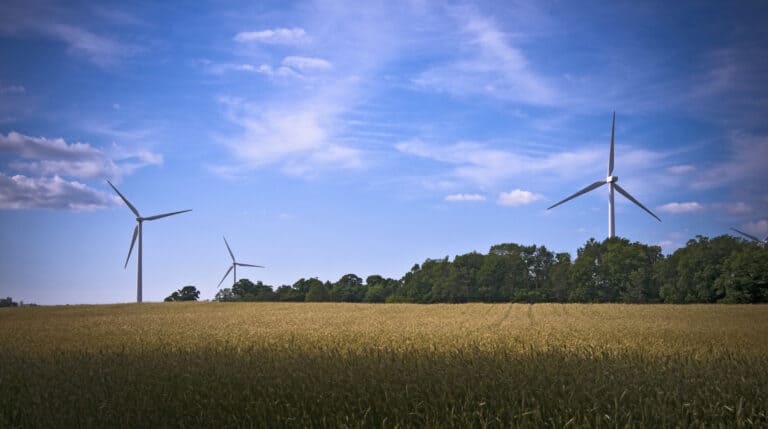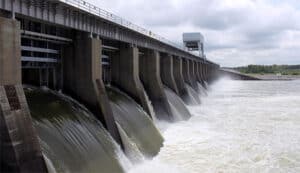Summer Haven Wind Energy Park
HB White Canada Corp. selected Motor City Electric Utilities Co. (MCEU) and Mid South Contractors ULC (MSC) to perform complete electrical contracting for NextEra Energy’s 129MW Summer Haven Wind Farm in Haldimand County, Ontario. The location provides excellent wind currents due to its proximity to Lake Erie. MCEU and MSC are wholly owned subsidiaries of Motor City Electric Co. MCEU specializes in utility work, including substations, transmission and distribution, street lighting, and similar projects. MSC, based in Windsor, Ontario, is MCE’s base of operations for projects in Canada.
The Summer Haven project included constructing approximately 60 miles of underground collection cabling, a 7-mile long 230kV transmission line, a new 230-34.5kV collector substation, and a wind turbine generator (WTG) work for 56 Siemens 2.3MW turbines.
Substation
After surveying the electrical lines and the on-site substation, Motor City Electric Utilities Co. constructed access roads and foundations. MCEU built the on-site substation and the attached operations building. Substation equipment includes the main isolation switch and main circuit breaker, step-up power transformer/distribution switchgear, instrument transformers, grounding, high voltage, and low voltage circuit breakers and disconnects, and revenue metering.
The substation needed to be connected via overhead transmission lines to the primary 230kV Hydro One Networks Inc. (HONI) transmission line via a switchyard area. The switchyard area contains both a Summer Haven switching station and a HONI switching station that includes three separate buildings and connects to the primary circuit. This requirement needed careful and well-planned coordination between MCEU, HONI, and HB White.
Collector System
The collector system is an underground network of 34.5 kV standard utility cable interconnecting the individual turbines and connecting to the substation. MCEU completed the collection system cabling and overhead transmission line in 2 months.
The 7-mile long 230kV overhead transmission line was mounted on poles by MCEU using a truck-mounted auger and a crane. MCEU used a boom truck to ensure that the poles were ready for conductors. MCEU trenched most of the line rather than running it on overhead poles to help minimize any loss of arable farmland.
Additional Features
Horizontal directional drilling was employed for crossings close to a body of water or a natural feature to reduce adverse environmental effects.
The project includes three meteorological weather towers that monitor wind speeds. For safety, the turbines automatically shut down if wind speeds exceed 55 MPH. Finally, MCEU installed a secondary containment system around transformers to control contamination in the event of a leak.










